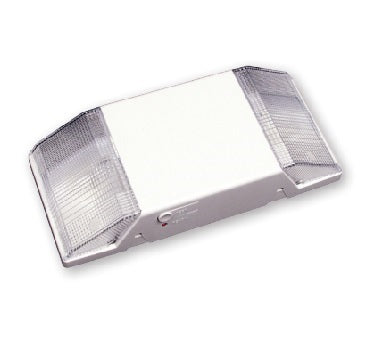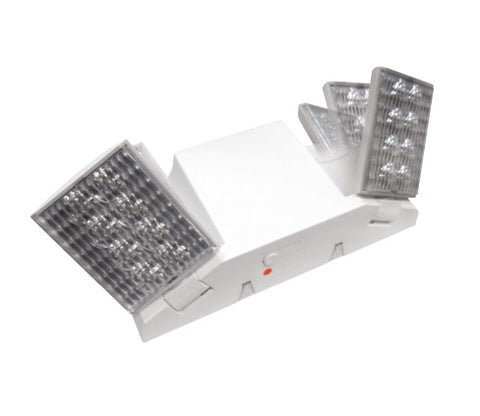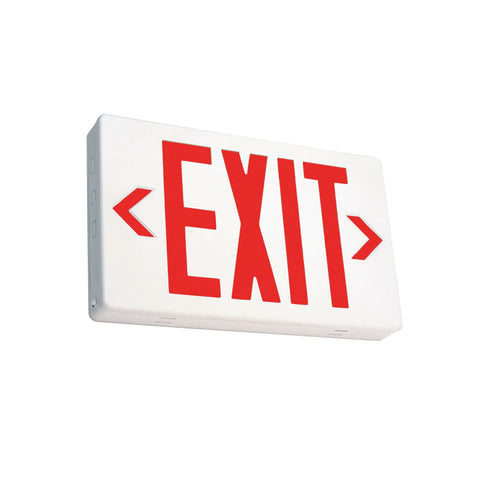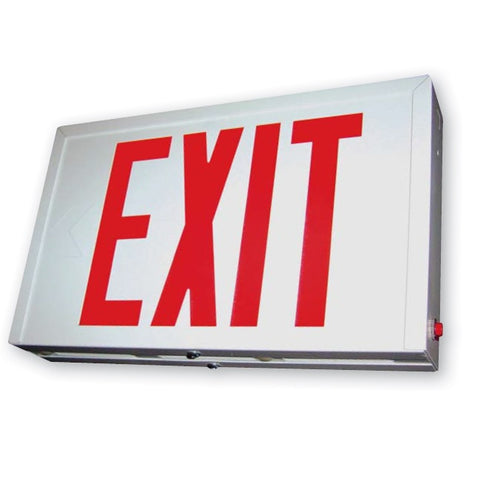
Who Makes the Rules: IBC, NFPA & OSHA Emergency Lighting Requirements
Let's begin with the "who" – that is, the regulatory groups setting the rules. While you may have heard of OSHA, emergency lighting requirements are actually determined by three groups:
- IBC: International Building Code provides requirements for means of egress.
- NFPA: National Fire Protection Association. Their Code 101® is updated every three years to review guidelines for new and existing facilities and verify all building occupants are receiving the best protection from fire hazards.
- OSHA: Occupational Safety & Health Administration provides guidance on exit routes and emergency planning.
Assuming you follow the emergency lighting requirements of OSHA, the IBC and NFPA, you shouldn't have any problems. The final judges, however, are your state and local building code ordinances. To avoid any potential issues, it's essential that you also familiarize yourself with these requirements.
What Types You Need: Requirements for Emergency Lighting
When it comes to requirements for emergency lighting and exit signs, it's important to identify the main types that must be installed in public locations. Whether the property is a standalone restaurant, a large shopping mall or a government building with both employees and the public present, there are certain types of lighting the location is required to have as a safety measure.
- Exit Signs: These appear above an exit door. The letters in the word "Exit" should be at least 6 inches tall and 3/4 inches wide. Some local jurisdictions state the word "Exit" must be red.
- Exit Access Route: The pathway people take to get to the emergency exit – including escalators, corridors or ramps– is called the exit access route and needs to be well-lit in an emergency. Any passage along an escape route that doesn't lead to an exit must be marked as either "Closet" or "Not an Exit" to avoid confusion in an emergency.
- Exit Discharge: The exit discharge is the area on the other side of the emergency door and marks the end of the trail to safety.
These three areas need ample light to ensure visibility and safe passage. While there are generally few rules on what type of fixture is used regarding lamp type or style, the word "EXIT" must be visible and properly illuminated. The reliability of light-emitting diode (LED) Exit signs makes them a solid choice for safety lighting.
A standard guideline in emergency lighting regulations is that the electrical supply must kick in 10 seconds after normal power goes out, and the emergency lighting must stay lit for at least 90 minutes after the initial power loss. This is important as it ensures that all employees and customers have ample time to find their way out of a building with proper emergency lighting as their guide.
When an Emergency Lighting Inspection Should Take Place
Regular inspections ensure your lights and signs will operate appropriately in an emergency. Per the NFPA, you must undergo a complete emergency lighting inspection monthly and annually. During monthly checks, a log must be kept and should confirm the following:
- The lighting has been installed correctly and is code-compliant.
- The Equipment has not been physically damaged.
- The emergency lighting system passes the 30-second push test.
- The lamps are pointed in the right direction.
Yearly examinations should be more comprehensive:
- The entire unit must be examined.
- The lighting and battery system must pass a 90-minute test.
- The battery's condition, voltage and manufacturer date must all be checked.
- AC/DC lamps should be inspected to ensure they operate properly and have not been damaged.
- Confirm the charging circuit is operating correctly.
- After the test, apply an emergency lighting test label to each sign and fixture.
Where Emergency Lights Are Required
Along with being positioned all along the route that leads out of the building, emergency lights are required in storage rooms where essential equipment like fire pumps, generators and electrical systems are kept. Having emergency lights in these areas ensures firefighters and other safety personnel can access the equipment in an emergency.
Why Following Emergency Lighting Regulations Is Critical
One of the most compelling reasons for business owners to follow emergency lighting regulations is they'll face a stiff financial penalty (up to $250,000) for non-compliance that results in death – or penalties for lesser violations. However, there are also several other important reasons to follow these regulations:
- Life Safety: The primary purpose of emergency lighting is to safeguard the lives of occupants in commercial buildings during emergency situations. By adhering to emergency lighting regulations, building owners ensure that occupants have the best possible chance of safely evacuating in critical situations, reducing the risk of injury or loss of life.
- Orderly Evacuation: During emergencies, panic and confusion can quickly escalate, leading to chaos and hindering evacuation efforts. Properly designed and installed emergency lighting systems play a crucial role in maintaining order and providing clear guidance to occupants.
- Occupant Confidence and Peace of Mind: Employees and visitors of commercial buildings rely on the presence of emergency lighting to feel safe and secure in their environment.
- Emergency Response Effectiveness: Emergency lighting not only benefits the building occupants but also aids emergency responders in carrying out their duties effectively.
Frequently Asked Questions About Emergency Lighting Requirements
Following are some of the often-asked questions about emergency lighting requirements. Please let our team of lighting experts know if you have other questions or if you'd like free lighting design and layout assistance.
According to Emergency Lighting Code Requirements, Does Lighting Have to be Hardwired?
Emergency lighting code requirements state that egress lighting has to be hardwired – meaning served by your principal electrical supply. Additionally, you must have one of the following:
- Battery-operated systems
- Backup generator
- Individual lights & signs with internal battery backups
Additionally, you must design your emergency lighting system so that even if only one bulb burns out, it doesn't leave a space that requires people to navigate their way to safety in the dark.
Do You Have Exit Signs & Emergency Lighting That Can Be Used in Wet Locations?
Yes, we carry signs and lighting fixtures for emergency use that operate in wet conditions. Check the product description to ensure the item you're interested in is sealed and gasketed for weatherproof performance.
What Is Your Warranty on Emergency Lights With Battery Backup?
Warehouse Lighting provides a 5-year warranty and our industry-leading product support when you purchase any of our premium commercial emergency lights with battery backup.
Partner With Warehouse-Lighting.com to Meet Emergency Lighting Requirements
Emergency lighting requirements hold immense significance for the safety and well-being of occupants. By following these regulations, building owners and facility managers ensure that their spaces are equipped with reliable and effective emergency lighting systems that can guide individuals to safety during critical situations. Warehouse-Lighting.com stands as a trusted partner in this pursuit, providing building owners with emergency lighting and any other commercial lighting fixtures and LED lights needed for your commercial building. Order your commercial lighting today!
Related Articles: Emergency Lighting Requirements
Learn about lighting fixtures and exit signs that deliver years of reliable performance so you can provide safe access for workers and visitors.
Explore five examples of how commercial LED lighting helps reduce accidents in the workplace to keep your employees on the job.
Discover some of the reasons why emergency lighting is essential in public buildings.
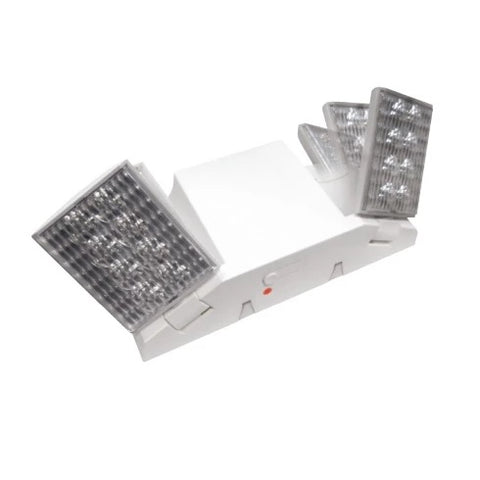
Buy emergency lights online at Warehouse Lighting. Browse our selection of wall-mounted and ceiling-mounted commercial LED emergency light fixtures. Shop emergency lights for business and commercial applications online today.
View (26) Products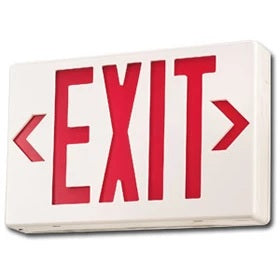
Shop the best selection of LED exit signs at Warehouse Lighting. We carry LED exit lights in a variety of face colors, install options, and styles. Order your LED exit sign and emergency exit lights online today.
View (24) Products High Bay LED Lighting
High Bay LED Lighting
 Industrial Low Bay Lighting
Industrial Low Bay Lighting
 Industrial Strip Lights
Industrial Strip Lights
 Vapor Tight Lighting
Vapor Tight Lighting
 LED Shop Lights
LED Shop Lights
 Hazardous Area / Explosion Proof Lighting
Hazardous Area / Explosion Proof Lighting
 Loading Dock Lights
Loading Dock Lights
 Construction / Portable Lighting
Construction / Portable Lighting
 Industrial Ceiling Fans
Industrial Ceiling Fans
 LED Work Lights
LED Work Lights
 Clearance
Clearance
 Troffer Lights
Troffer Lights
 LED Flat Panel Lights
LED Flat Panel Lights
 Drop Ceiling Lights
Drop Ceiling Lights
 Suspended LED Lights
Suspended LED Lights
 Exit / Emergency
Exit / Emergency
 Wrap Lighting Fixtures
Wrap Lighting Fixtures
 Gooseneck and Barn Lights
Gooseneck and Barn Lights
 Commercial Stairway Lighting
Commercial Stairway Lighting
 Hospital Bed Lights
Hospital Bed Lights
 Commercial Sign Lights
Commercial Sign Lights
 UV Disinfecting Lights & Air Purifier Fixtures
UV Disinfecting Lights & Air Purifier Fixtures
 Recessed Lighting
Recessed Lighting
 Wafer Lighting
Wafer Lighting
 RGB LED Lights
RGB LED Lights
 Grow Lights
Grow Lights
 Refrigeration Lighting
Refrigeration Lighting
 LED Flood Lights
LED Flood Lights
 Outdoor Wall Lights
Outdoor Wall Lights
 LED Area Lights
LED Area Lights
 Parking Lot Lights & Poles
Parking Lot Lights & Poles
 Outdoor Post Top Lights
Outdoor Post Top Lights
 LED Stadium Lighting
LED Stadium Lighting
 Canopy Lights
Canopy Lights
 Security Lights
Security Lights
 LED Bollard Lights
LED Bollard Lights
 Solar Powered LED Lighting
Solar Powered LED Lighting
 Dusk to Dawn Lights
Dusk to Dawn Lights
 Landscape Lighting
Landscape Lighting
 Outdoor String Lights
Outdoor String Lights
 Coastal Wildlife Lighting
Coastal Wildlife Lighting
 Outdoor House Lights
Outdoor House Lights
 Ceiling Fans
Ceiling Fans
 Ceiling Lights
Ceiling Lights
 Chandelier Lights
Chandelier Lights
 Pendant Lighting
Pendant Lighting
 Island Lights
Island Lights
 Track Lighting
Track Lighting
 Under Cabinet Lighting
Under Cabinet Lighting
 Vanity Lights
Vanity Lights
 Wall Sconces
Wall Sconces
 LED Tape Lights
LED Tape Lights
 LED Light Bulbs
LED Light Bulbs
 LED Tube Lights
LED Tube Lights
 LED Corn Lights
LED Corn Lights
 Vintage LED Bulbs
Vintage LED Bulbs
 Decorative LED Bulbs
Decorative LED Bulbs
 Fluorescent Light Bulbs
Fluorescent Light Bulbs
 Metal Halide Lamps
Metal Halide Lamps
 Shatterproof Light Bulbs
Shatterproof Light Bulbs
 LED Magnetic Strip Retrofit Kits
LED Magnetic Strip Retrofit Kits
 LED Strip Light Retrofit Kits
LED Strip Light Retrofit Kits
 High Bay LED Retrofit Kits
High Bay LED Retrofit Kits
 LED Troffer Retrofit Kits
LED Troffer Retrofit Kits
 LED Wall Pack Retrofit
LED Wall Pack Retrofit
 LED Street Light Retrofit Kits
LED Street Light Retrofit Kits
 Recessed Lighting LED Retrofit Kits
Recessed Lighting LED Retrofit Kits
 CFL Ballasts
CFL Ballasts
 Electronic Halide Ballast
Electronic Halide Ballast
 Emergency Ballasts & Inverters
Emergency Ballasts & Inverters
 Fluorescent Ballasts
Fluorescent Ballasts
 LED Drivers
LED Drivers
 High Pressure Sodium Ballasts
High Pressure Sodium Ballasts
 Metal Halide (HID) Ballasts
Metal Halide (HID) Ballasts
 Pulse Start Metal Halide Ballasts
Pulse Start Metal Halide Ballasts
 Electric Vehicle Chargers
Electric Vehicle Chargers
 Ballasts & Drivers
Ballasts & Drivers
 Electrical Supplies
Electrical Supplies
 Electrical Tools
Electrical Tools
 Switches & Receptacles
Switches & Receptacles
 Hand Dryers
Hand Dryers
 Electrical Power Cords
Electrical Power Cords
 Sensors and Timers
Sensors and Timers
 Smart Home Automation
Smart Home Automation
 High Bay Occupancy Sensors
High Bay Occupancy Sensors
 Outdoor Motion Sensor Lights
Outdoor Motion Sensor Lights
 Walkway Lights
Walkway Lights
 Office Lights
Office Lights
 Gym Lighting
Gym Lighting
 Exterior Building Lights
Exterior Building Lights
 Sports Lighting
Sports Lighting
 Hospital Lights
Hospital Lights
 Airport Lights
Airport Lights
 Classroom Lights
Classroom Lights
 Factory Lights
Factory Lights
 Restaurant Lights
Restaurant Lights
 Corridor Lights
Corridor Lights
 Church Lights
Church Lights










